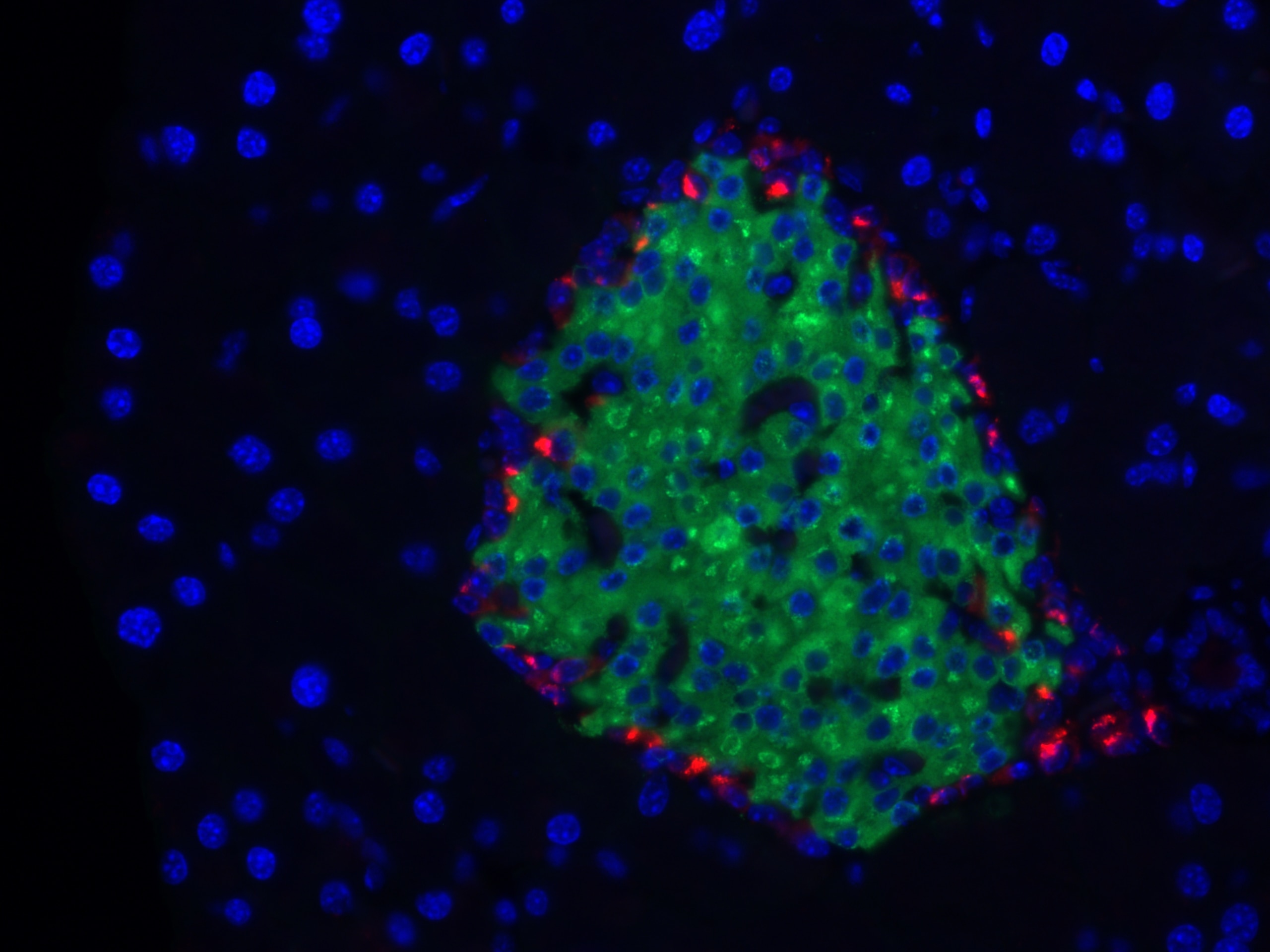Anticorps Monoclonal anti-Glucagon
Glucagon Monoclonal Antibody for IF-P
Hôte / Isotype
Mouse / IgG1
Réactivité testée
Humain, souris
Applications
IF-P
Conjugaison
CoraLite®594 Fluorescent Dye
CloneNo.
2A8G1
N° de cat : CL594-67286
Synonymes
Galerie de données de validation
Applications testées
| Résultats positifs en IF-P | tissu pancréatique de souris, |
Dilution recommandée
| Application | Dilution |
|---|---|
| Immunofluorescence (IF)-P | IF-P : 1:200-1:800 |
| It is recommended that this reagent should be titrated in each testing system to obtain optimal results. | |
| Sample-dependent, check data in validation data gallery | |
Applications publiées
| IF | See 1 publications below |
Informations sur le produit
CL594-67286 cible Glucagon dans les applications de IF-P et montre une réactivité avec des échantillons Humain, souris
| Réactivité | Humain, souris |
| Réactivité citée | Humain, souris |
| Hôte / Isotype | Mouse / IgG1 |
| Clonalité | Monoclonal |
| Type | Anticorps |
| Immunogène | Glucagon Protéine recombinante Ag10629 |
| Nom complet | glucagon |
| Masse moléculaire calculée | 180 aa, 21 kDa |
| Numéro d’acquisition GenBank | BC005278 |
| Symbole du gène | Glucagon |
| Identification du gène (NCBI) | 2641 |
| Conjugaison | CoraLite®594 Fluorescent Dye |
| Excitation/Emission maxima wavelengths | 588 nm / 604 nm |
| Forme | Liquide |
| Méthode de purification | Purification par protéine G |
| Tampon de stockage | PBS with 50% glycerol, 0.05% Proclin300, 0.5% BSA |
| Conditions de stockage | Stocker à -20 °C. Éviter toute exposition à la lumière. Stable pendant un an après l'expédition. L'aliquotage n'est pas nécessaire pour le stockage à -20oC Les 20ul contiennent 0,1% de BSA. |
Informations générales
Glucagon is a 29-amino acid peptide hormone secreted from the pancreatic alpha cells with a powerful stimulatory effect on hepatic glucose production acting to increase plasma glucose levels. Glucagon is best known as the counter-regulatory hormone to INS, and normal glucose homeostasis depends largely on the balanced secretion of INS and glucagon from the pancreatic beta and alpha cells, respectively.The regulation of glucose metabolism by glucagon is mediated by its direct action on the peripheral tissues such as the liver and also by the brain. Glucagon is also released postprandially in a transient manner, which was shown to be involved in inhibition of food intake via reduction of meal size.
Protocole
| Product Specific Protocols | |
|---|---|
| IF protocol for CL594 Glucagon antibody CL594-67286 | Download protocol |
| Standard Protocols | |
|---|---|
| Click here to view our Standard Protocols |


